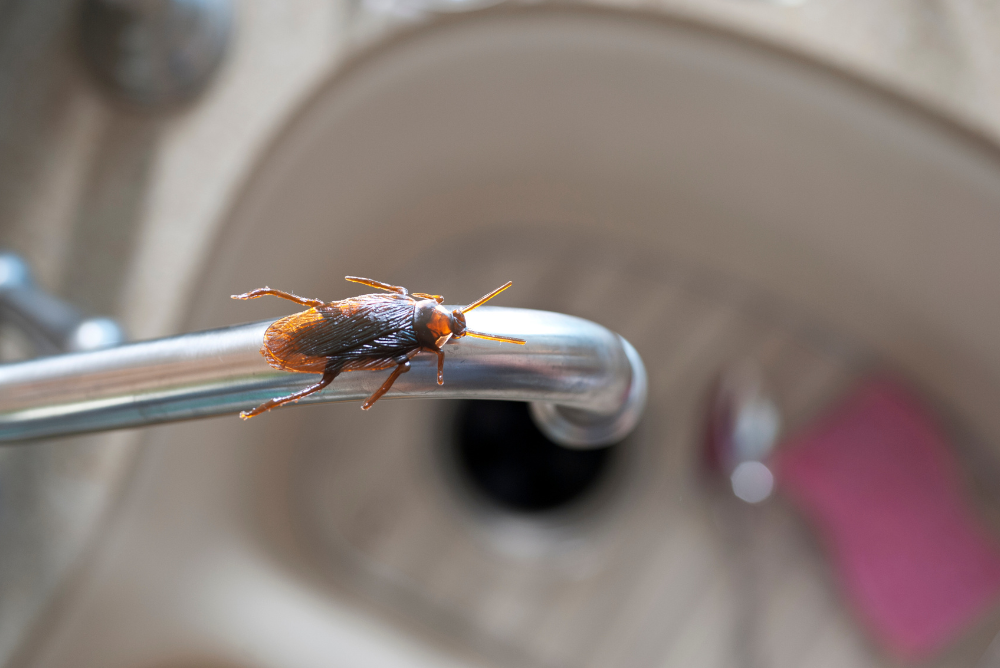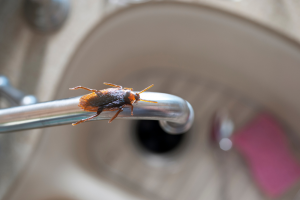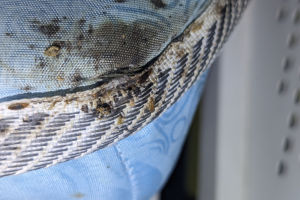Why Cockroach Infestations Are a Health Hazard
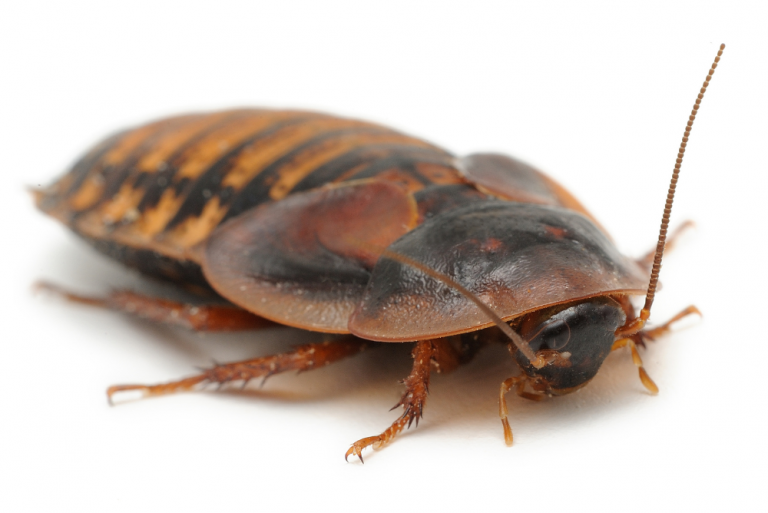
Cockroach infestations are not only unsightly—they can also pose serious health hazards to you and your family. Cockroaches are known to carry a wide range of harmful bacteria and pathogens that can be transmitted to humans. These disease-causing organisms are often spread when cockroaches come into contact with food, kitchen surfaces, and utensils, contaminating them in the process.
Some of the most common illnesses linked to cockroach infestations include:
- Salmonellosis: This bacterial infection causes symptoms such as diarrhoea, fever, and abdominal cramps, and is often transmitted through contaminated food.
- E. coli infections: Contact with cockroach-contaminated surfaces can result in painful stomach cramps and persistent diarrhoea.
- Typhoid fever: Spread by ingesting food or water contaminated by cockroaches, typhoid leads to high fever, fatigue, and severe abdominal discomfort.
- Dysentery and cholera: These are both severe gastrointestinal diseases causing watery diarrhoea and dehydration, which can be life-threatening without prompt treatment.
In addition to spreading bacteria, cockroach droppings, saliva, and shed exoskeletons contain potent allergens. These can trigger asthma attacks and allergic reactions, particularly in children, the elderly, and individuals with respiratory conditions. Long-term exposure to these allergens can worsen symptoms over time, making prompt pest control essential.
How to Detect Cockroach Infestations Early
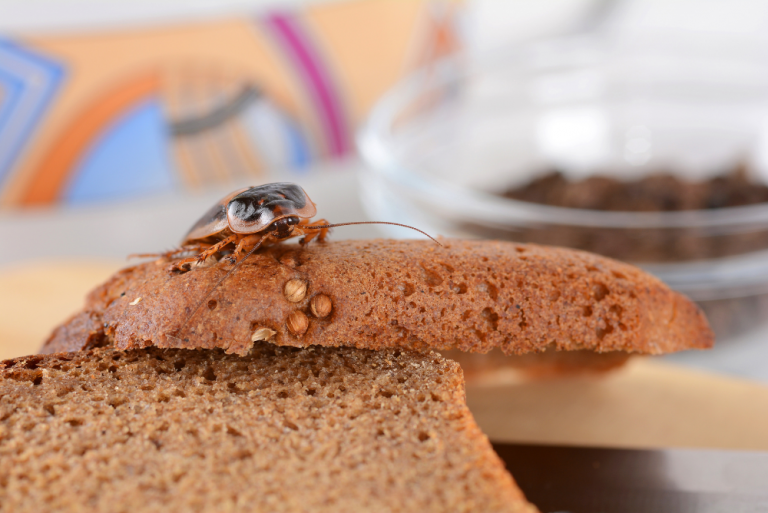
Early detection of a cockroach infestation is vital in preventing a minor issue from becoming a full-blown problem. Cockroaches are nocturnal and excellent at hiding, so it’s important to recognise the warning signs before the infestation spreads further. One of the most common signs is the presence of droppings, which appear as tiny black specks resembling ground coffee or pepper. These are often found in kitchen cabinets, behind appliances, or along baseboards and wall edges.
Another tell-tale sign is the presence of smear marks—irregular, dark brown stains that appear on horizontal surfaces and walls where cockroaches are most active, especially in areas with high moisture levels. Egg casings, also known as oothecae, are another indicator. These are small, oval-shaped brown cases that cockroaches deposit in dark, hidden corners. Each casing can contain dozens of eggs, which will hatch if not removed in time.
Shed skins from moulting cockroaches may also be visible near nesting sites. Additionally, a strong, musty odour may develop over time as the infestation grows—this smell is often difficult to ignore. Finally, seeing live cockroaches, particularly at night in kitchens or bathrooms, is a clear sign that an infestation is already underway and should be addressed immediately.
Best Extermination Methods
Dealing with a cockroach infestation can be frustrating and unsettling, but with the right approach, it’s entirely manageable. There are several effective methods that homeowners in Singapore can use to get rid of cockroaches and prevent them from coming back. These methods range from simple cleaning habits to professional pest control treatments. Below, we break down each approach in detail to help you take back control of your home.
1. Maintain Cleanliness
Maintaining a clean environment is one of the most important and effective ways to keep cockroaches away. These pests thrive in places where food is easily accessible and hiding spots are plentiful. If your home is not cleaned regularly, it becomes a breeding ground for cockroaches.
Key cleaning habits include:
- Wipe down surfaces daily – Crumbs, grease, and spills on kitchen counters, dining tables, and floors attract cockroaches. Clean these areas thoroughly, especially after preparing food.
- Store food in sealed containers – Open food packages or loosely sealed containers are an invitation for cockroaches. Use airtight containers for dry goods, leftovers, and even pet food.
- Empty the bins frequently – Rubbish, especially food waste, should be removed daily. Make sure your garbage bins have tight-fitting lids and are cleaned regularly.
- Clean under appliances – Areas beneath refrigerators, ovens, and microwaves often gather crumbs and moisture, which attract pests. These spots should be part of your routine cleaning.
By keeping your home clean and free from food debris, you drastically reduce the chances of attracting cockroaches in the first place.
2. Seal Entry Points
Even the cleanest homes can fall victim to cockroach infestations if there are unsealed entry points that allow them to enter. Cockroaches can slip through even the tiniest gaps in your home, which is why sealing these areas is essential.
Here are steps to keep cockroaches out:
- Inspect and seal cracks – Examine walls, skirting boards, floors, and tile joints for cracks or holes. Use a high-quality sealant or filler to close any gaps.
- Check plumbing and utility entry points – Gaps around pipes, drains, or wiring that enters your home should be sealed with silicone or expanding foam.
- Install door sweeps and window screens – Make sure external doors have tight-fitting sweeps, and windows are fitted with fine mesh screens to prevent pests from entering.
- Fix any water leaks – Cockroaches are attracted to moisture. Repair leaking taps, pipes, or air conditioners to avoid damp areas that could encourage nesting.
Prevention is always better than cure. By eliminating possible access points, you stop infestations before they start.
3. Use Baits and Traps
When it comes to minor infestations or early-stage problems, using baits and traps can be a highly effective and low-cost solution. They work by attracting cockroaches to a poison-laced food source, which they then carry back to the nest, poisoning others in the colony.
Best practices for baiting and trapping:
- Place in high-activity areas – Focus on areas where you’ve seen cockroach activity, such as under sinks, behind appliances, and along baseboards.
- Use gel baits – These are widely available and can be applied in cracks and crevices. Cockroaches eat the bait and return to their hiding place, where they die and may be consumed by others, spreading the poison.
- Sticky traps – These adhesive-based traps catch cockroaches as they travel. They’re useful for monitoring where infestations are concentrated.
- Avoid spraying near baits – Using insect sprays near baits can deter cockroaches from approaching them. Let the baits do their job without interference.
While baits and traps can help reduce the population, they may not eliminate an infestation completely if it’s widespread.
4. Natural Remedies
For those looking for chemical-free or eco-friendly solutions, there are several natural remedies that may help repel or kill cockroaches. While these methods may not be as powerful as professional treatments, they can serve as a supportive strategy, particularly when combined with good hygiene and sealing practices.
Popular natural cockroach deterrents include:
- Diatomaceous Earth (DE) – This non-toxic, powdery substance is made from fossilised algae. When cockroaches come into contact with it, it damages their exoskeleton, eventually dehydrating and killing them. Sprinkle it lightly in corners, cracks, and behind furniture.
- Lemon juice or citrus spray – The smell of citrus is unpleasant to cockroaches. You can mop floors with a lemon-water solution or spray it in affected areas to act as a natural deterrent.
- Bay leaves and garlic – Crushed garlic cloves or bay leaves can be placed in problem spots such as cupboards or under sinks. The strong odour may discourage cockroaches from nesting.
- Essential oils – Oils like peppermint, eucalyptus, and tea tree oil can be mixed with water and sprayed around the home. These oils have repellent properties and leave your home smelling fresh.
While these remedies are not a guaranteed fix for heavy infestations, they are safe to use around children and pets and can help keep your home cockroach-free when used consistently.
5. Professional Pest Control
If you’re dealing with a severe infestation, DIY methods alone may not be enough. Cockroaches are notoriously resilient and can hide deep within walls, drains, and cabinets, making them hard to eliminate without professional help. This is where licensed pest control services come in.
Why hire professionals like AllOut Pest:
- Comprehensive inspections – Experts will conduct a thorough inspection to identify hiding places, entry points, and the extent of the infestation.
- Targeted treatment plans – Depending on your home’s layout and infestation level, they may use a combination of gel baits, insect growth regulators (IGRs), residual sprays, or dusting treatments that reach deep into cockroach nesting zones.
- Safe and approved methods – Professional-grade chemicals and techniques are far more effective and regulated for use in homes, especially where pets or children are present.
- Long-term prevention – Pest control providers like AllOut Pest also offer follow-up visits and provide helpful advice on maintaining a pest-free environment.
Professional pest control is the most reliable option when other solutions fail or when the infestation is beyond control. It saves you time, stress, and potential health risks.
Final Tips for Lasting Cockroach Control
Even after exterminating cockroaches, it’s crucial to remain vigilant and continue with preventive practices. Here are a few lasting tips:
- Keep food sealed and surfaces clean at all times.
- Address plumbing issues quickly to reduce moisture.
- Perform regular deep cleaning of less-accessible areas.
- Schedule routine pest inspections to catch issues early.
- Educate household members about hygiene and proper food storage.
Combining cleanliness, sealing, natural remedies, and professional pest control will help you build a long-term defence against cockroaches in your Singapore home.
Frequently Asked Questions (FAQs)
Yes, Singapore’s warm and humid climate provides ideal conditions for cockroaches to thrive, making infestations relatively common.
Lorem ipsum dolor sit amet, consectetur adipiscing elit. Ut elit tellus, luctus nec ullamcorper mattis, pulvinar dapibus leo.
While minor infestations can be managed with cleanliness and over-the-counter treatments, severe infestations often require professional pest control services for effective eradication.
By staying vigilant and taking prompt action, you can protect your home from the hidden dangers of cockroach infestations. If you’re facing a persistent problem, consider reaching out to professional pest control services in Singapore for assistance.
Conclusion
Cockroach infestations in Singapore homes are more than just an inconvenience—they are a serious health hazard that can lead to the spread of dangerous diseases and allergens. Understanding the risks associated with these pests, along with early detection, can help homeowners protect their families and homes from harm. By maintaining cleanliness, sealing entry points, and using appropriate baits, traps, and natural remedies, you can reduce the likelihood of an infestation. However, when these methods prove insufficient, seeking professional pest control services is often the most effective solution for dealing with severe infestations.
The key to successful cockroach pest control lies in a proactive approach—early intervention, consistent preventative measures, and professional expertise when needed. By following the strategies outlined in this guide, you can ensure your home remains safe, healthy, and free from cockroaches for the long term. Remember, the sooner you act, the easier it will be to manage the problem and prevent further complications. For expert advice and services, don’t hesitate to consult with professionals like AllOut Pest, who are dedicated to providing tailored pest control solutions for your home.

